Managing Pool Water Temperature Fluctuations
Maintaining a consistent pool water temperature is crucial for creating a comfortable and enjoyable swimming experience. Fluctuations in water temperature can cause discomfort for swimmers, affect the pool's chemical balance, and even lead to damage over time. This guide will explore the causes of temperature fluctuations and offer practical tips and innovative solutions to help you keep your pool at the perfect temperature all year round. For pool owners, there's nothing quite like diving into perfectly tempered water on a hot summer day or enjoying a warm dip during cooler months. However, maintaining that ideal temperature can be challenging due to various factors that cause fluctuations. Understanding these factors and learning how to manage them effectively is essential for preserving both the comfort and longevity of your pool.
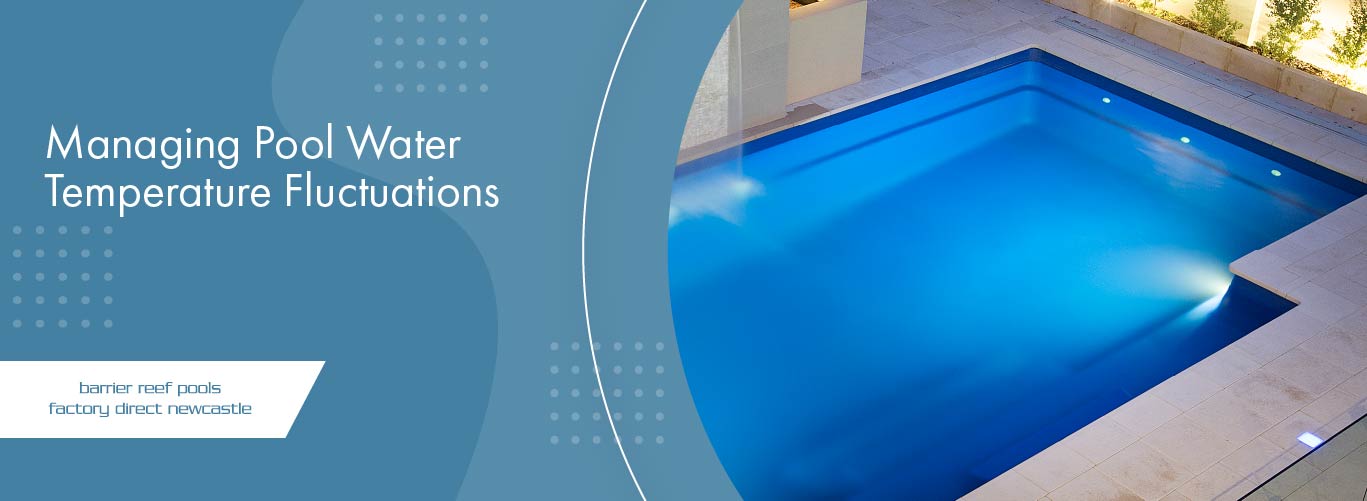
Understanding the Causes
Heat Loss Factors in Pools
- Evaporation: The most significant source of heat loss in pools is evaporation. As water evaporates from the pool surface, it takes heat with it, leading to a drop in water temperature. This process is more pronounced in windy conditions or when the air is dry, as these factors accelerate the rate of evaporation.
- Conduction: Heat is also lost through conduction, where heat transfers from the warm pool water to the cooler surrounding air and ground. This type of heat loss is influenced by the temperature gradient between the pool water and its environment, meaning the greater the difference, the more heat is lost. Proper insulation can help minimise conduction losses.
- Radiation: At night or during cooler weather, the pool loses heat through radiation to the sky. This form of heat loss occurs regardless of wind conditions and is influenced by the temperature of the pool water and the surrounding environment. Covering the pool with a thermal blanket can significantly reduce heat loss through radiation by providing a barrier that traps the heat within the water.
Environmental Factors Affecting Pool Temperature
- Weather Conditions: Temperature fluctuations are often influenced by changes in weather. Wind can cause rapid heat loss from the surface of the pool, rain can introduce cooler water that lowers the overall temperature, and ambient temperature swings, such as hot days followed by cool nights, can also impact your pool’s temperature. Monitoring the weather forecast can help you anticipate and manage these changes more effectively.
- Sun Exposure: Pools that receive more sunlight naturally warm up faster during the day, as the sun’s rays directly heat the water. Conversely, those in shaded areas or with obstructions like trees or buildings may struggle to maintain warmth, especially during cooler months. Installing solar covers or heating systems can help retain heat in shaded pools and ensure a comfortable swimming environment year-round.
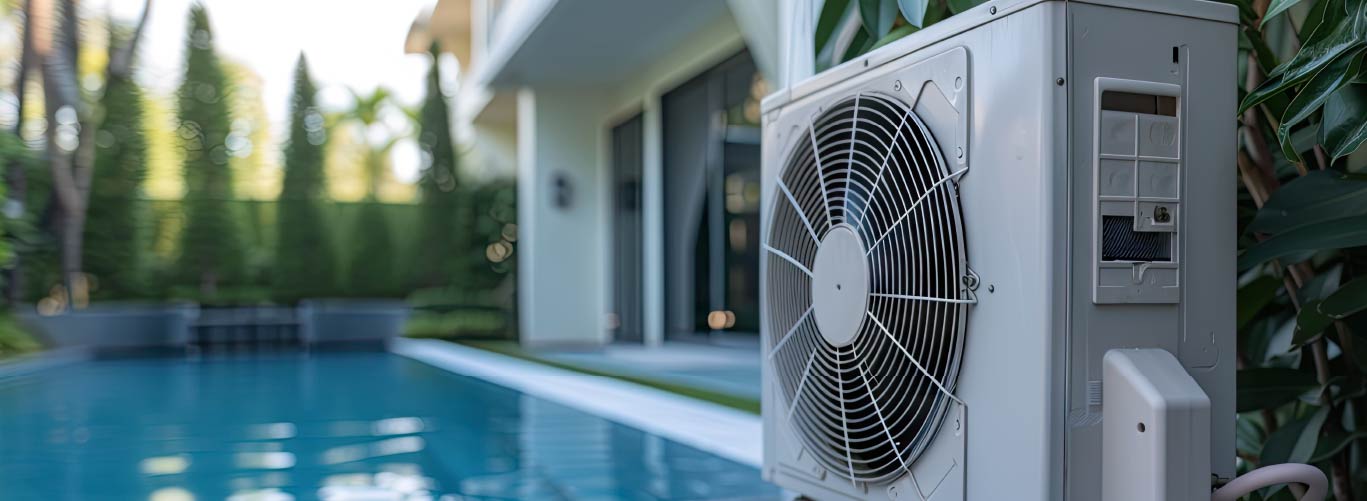
Practical Tips for Managing Temperature Fluctuations
Effective Use of Pool Covers
Using a pool cover is one of the most effective ways to reduce heat loss. Covers minimise evaporation and can retain heat, keeping your pool warmer for longer. Consider these tips for optimal use:
- Solar Covers: These covers not only reduce evaporation but also harness the sun’s energy to heat the pool water, making them an eco-friendly and cost-effective solution for maintaining pool temperature.
- Thermal Blankets: Designed specifically to retain heat, thermal blankets are ideal for cooler climates, helping to keep your pool warm and comfortable even during chilly nights or early mornings.
- Use at Night: Always cover your pool at night to prevent heat loss due to radiation and evaporation. This simple step can significantly reduce energy costs and keep your pool at a more consistent temperature.
Installing Solar Panels or Heaters
Harnessing solar energy or using heaters can provide a sustainable solution for maintaining your pool’s temperature:
- Solar Panels: These are eco-friendly and cost-effective in the long run. They work by circulating pool water through solar collectors, heating it before returning it to the pool.
- Electric or Gas Heaters: These provide more control over water temperature and can be used year-round. Electric heaters are efficient but can be costly, whereas gas heaters warm water quickly and are less affected by ambient temperature.
Timed Operation of Pool Equipment
Optimising the use of pool equipment can also help manage temperature fluctuations effectively:
- Pumps and Filters: Run these during the warmest parts of the day to take advantage of the sun’s natural heating.
- Timers: Use timers to schedule equipment operation, ensuring they run at peak efficiency times.
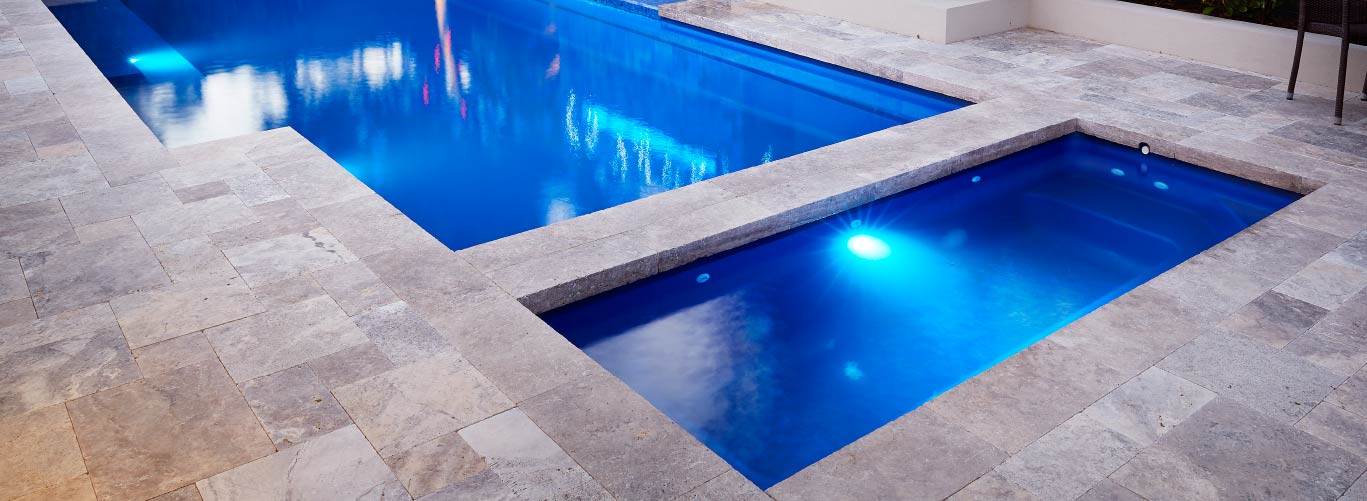
Technology and Innovations
Smart Pool Temperature Management Systems
Advancements in technology have introduced smart solutions for managing pool water temperature:
- Smart Thermostats: These devices can monitor and adjust your pool’s temperature automatically based on your preferences and real-time weather conditions.
- Mobile Apps: Many systems now come with apps that allow you to control your pool’s temperature remotely, receive alerts, and access usage data.
Benefits of Smart Technology
Smart technology provides advantages:
- Precision Control: Automatically maintains your desired temperature.
- Energy Efficiency: Optimises energy use, reducing costs.
- Convenience: Remote monitoring and control make managing your pool easier.
Advice for Seasonal Changes
Adjusting Maintenance Routines
As seasons change, so should your pool maintenance routines to manage temperature fluctuations:
- Summer: Increase filtration and chemical checks as higher temperatures can speed up chemical reactions and algae growth.
- Autumn: Use covers more frequently to retain heat, and consider gradually lowering the temperature as the weather cools.
Preparing Pools for Winter
Proper winterisation is essential to prevent damage from freezing temperatures:
- Lower Water Levels: Reduce the water level below the skimmer to prevent ice damage.
- Use Antifreeze: Add pool antifreeze to plumbing lines to protect against freezing.
- Winter Covers: Invest in a quality winter cover to keep debris out and help maintain a stable temperature.
Managing pool water temperature fluctuations is a multifaceted task that requires understanding the factors at play and employing a combination of practical tips and innovative solutions. By effectively using pool covers, you can significantly reduce heat loss and maintain a more stable temperature. Installing solar panels or heaters provides an energy-efficient way to keep the water warm, while optimising equipment operation ensures that your pool systems are running efficiently and effectively. Additionally, leveraging smart technology, such as automated temperature controls and monitoring systems, allows for real-time adjustments and greater precision. With these strategies in place, you can ensure your pool remains a comfortable and inviting oasis regardless of the season, providing a perfect environment for relaxation and enjoyment all year round.
Managing Pool Water Temperature Fluctuations
Maintaining a consistent pool water temperature is crucial for creating a comfortable and enjoyable swimming experience. Fluctuations in water temperature can cause discomfort for swimmers, affect the pool's chemical balance, and even lead to damage over time. This guide will explore the causes of temperature fluctuations and offer practical tips and innovative solutions to help you keep your pool at the perfect temperature all year round. For pool owners, there's nothing quite like diving into perfectly tempered water on a hot summer day or enjoying a warm dip during cooler months. However, maintaining that ideal temperature can be challenging due to various factors that cause fluctuations. Understanding these factors and learning how to manage them effectively is essential for preserving both the comfort and longevity of your pool.
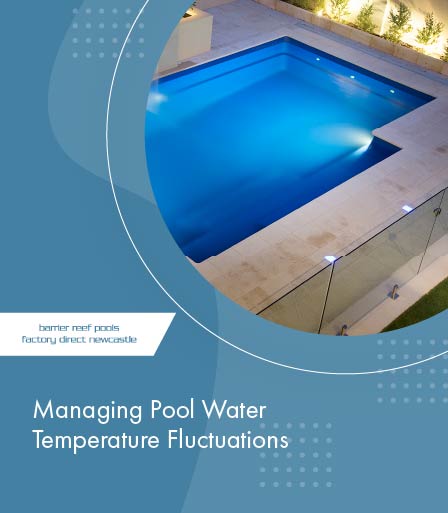
Understanding the Causes
Heat Loss Factors in Pools
- Evaporation: The most significant source of heat loss in pools is evaporation. As water evaporates from the pool surface, it takes heat with it, leading to a drop in water temperature. This process is more pronounced in windy conditions or when the air is dry, as these factors accelerate the rate of evaporation.
- Conduction: Heat is also lost through conduction, where heat transfers from the warm pool water to the cooler surrounding air and ground. This type of heat loss is influenced by the temperature gradient between the pool water and its environment, meaning the greater the difference, the more heat is lost. Proper insulation can help minimise conduction losses.
- Radiation: At night or during cooler weather, the pool loses heat through radiation to the sky. This form of heat loss occurs regardless of wind conditions and is influenced by the temperature of the pool water and the surrounding environment. Covering the pool with a thermal blanket can significantly reduce heat loss through radiation by providing a barrier that traps the heat within the water.
Environmental Factors Affecting Pool Temperature
- Weather Conditions: Temperature fluctuations are often influenced by changes in weather. Wind can cause rapid heat loss from the surface of the pool, rain can introduce cooler water that lowers the overall temperature, and ambient temperature swings, such as hot days followed by cool nights, can also impact your pool’s temperature. Monitoring the weather forecast can help you anticipate and manage these changes more effectively.
- Sun Exposure: Pools that receive more sunlight naturally warm up faster during the day, as the sun’s rays directly heat the water. Conversely, those in shaded areas or with obstructions like trees or buildings may struggle to maintain warmth, especially during cooler months. Installing solar covers or heating systems can help retain heat in shaded pools and ensure a comfortable swimming environment year-round.
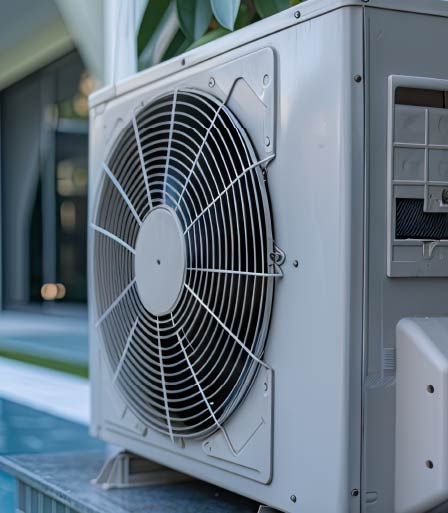
Practical Tips for Managing Temperature Fluctuations
Effective Use of Pool Covers
Using a pool cover is one of the most effective ways to reduce heat loss. Covers minimise evaporation and can retain heat, keeping your pool warmer for longer. Consider these tips for optimal use:
- Solar Covers: These covers not only reduce evaporation but also harness the sun’s energy to heat the pool water, making them an eco-friendly and cost-effective solution for maintaining pool temperature.
- Thermal Blankets: Designed specifically to retain heat, thermal blankets are ideal for cooler climates, helping to keep your pool warm and comfortable even during chilly nights or early mornings.
- Use at Night: Always cover your pool at night to prevent heat loss due to radiation and evaporation. This simple step can significantly reduce energy costs and keep your pool at a more consistent temperature.
Installing Solar Panels or Heaters
Harnessing solar energy or using heaters can provide a sustainable solution for maintaining your pool’s temperature:
- Solar Panels: These are eco-friendly and cost-effective in the long run. They work by circulating pool water through solar collectors, heating it before returning it to the pool.
- Electric or Gas Heaters: These provide more control over water temperature and can be used year-round. Electric heaters are efficient but can be costly, whereas gas heaters warm water quickly and are less affected by ambient temperature.
Timed Operation of Pool Equipment
Optimising the use of pool equipment can also help manage temperature fluctuations effectively:
- Pumps and Filters: Run these during the warmest parts of the day to take advantage of the sun’s natural heating.
- Timers: Use timers to schedule equipment operation, ensuring they run at peak efficiency times.
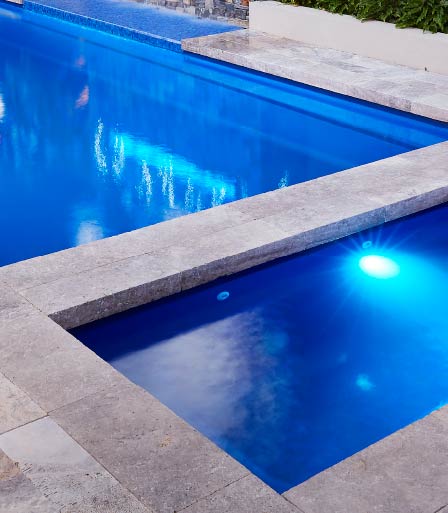
Technology and Innovations
Smart Pool Temperature Management Systems
Advancements in technology have introduced smart solutions for managing pool water temperature:
- Smart Thermostats: These devices can monitor and adjust your pool’s temperature automatically based on your preferences and real-time weather conditions.
- Mobile Apps: Many systems now come with apps that allow you to control your pool’s temperature remotely, receive alerts, and access usage data.
Benefits of Smart Technology
Smart technology provides advantages:
- Precision Control: Automatically maintains your desired temperature.
- Energy Efficiency: Optimises energy use, reducing costs.
- Convenience: Remote monitoring and control make managing your pool easier.
Advice for Seasonal Changes
Adjusting Maintenance Routines
As seasons change, so should your pool maintenance routines to manage temperature fluctuations:
- Summer: Increase filtration and chemical checks as higher temperatures can speed up chemical reactions and algae growth.
- Autumn: Use covers more frequently to retain heat, and consider gradually lowering the temperature as the weather cools.
Preparing Pools for Winter
Proper winterisation is essential to prevent damage from freezing temperatures:
- Lower Water Levels: Reduce the water level below the skimmer to prevent ice damage.
- Use Antifreeze: Add pool antifreeze to plumbing lines to protect against freezing.
- Winter Covers: Invest in a quality winter cover to keep debris out and help maintain a stable temperature.
Managing pool water temperature fluctuations is a multifaceted task that requires understanding the factors at play and employing a combination of practical tips and innovative solutions. By effectively using pool covers, you can significantly reduce heat loss and maintain a more stable temperature. Installing solar panels or heaters provides an energy-efficient way to keep the water warm, while optimising equipment operation ensures that your pool systems are running efficiently and effectively. Additionally, leveraging smart technology, such as automated temperature controls and monitoring systems, allows for real-time adjustments and greater precision. With these strategies in place, you can ensure your pool remains a comfortable and inviting oasis regardless of the season, providing a perfect environment for relaxation and enjoyment all year round.


